Hybrid Artifacts
2012-13
A series of works created in collaboration with Matthew Hebert. Each Hybrid Artifact investigates the connection between the handmade and the machine made - highlighting the imbedded artifacts of both processes. The computer's ability to recognize form and innovate in the absence of concrete data is put to the test - as it is with us every time we put hand to tool.
Hybrid Artifact #2 ( for John Bartram)
2013
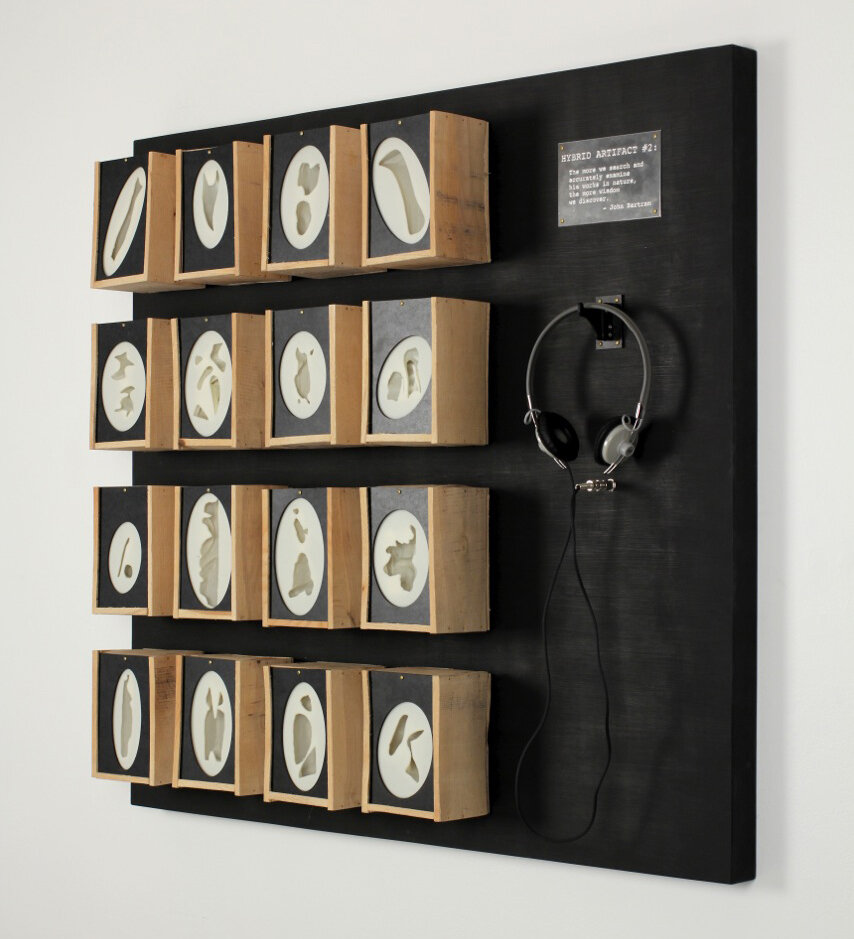
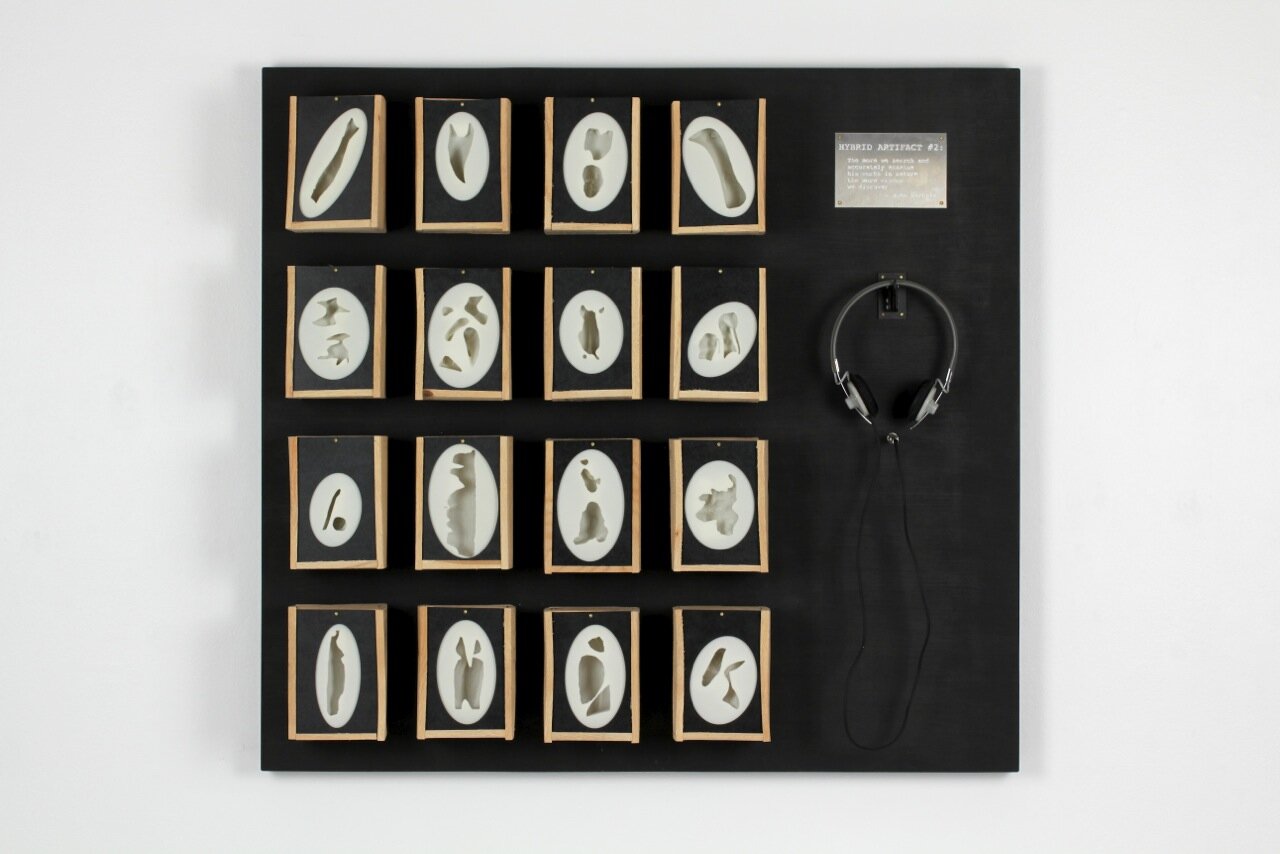
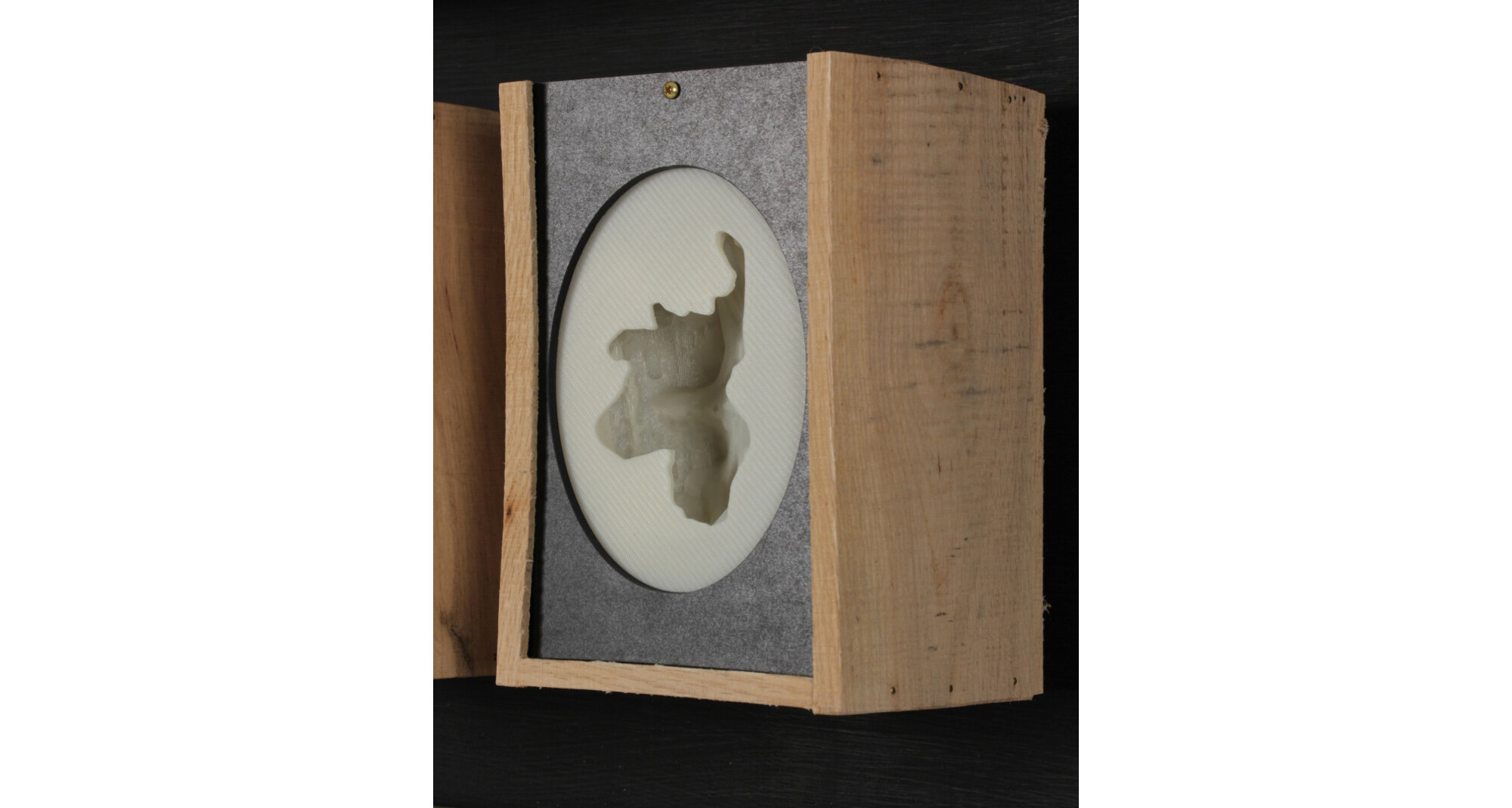
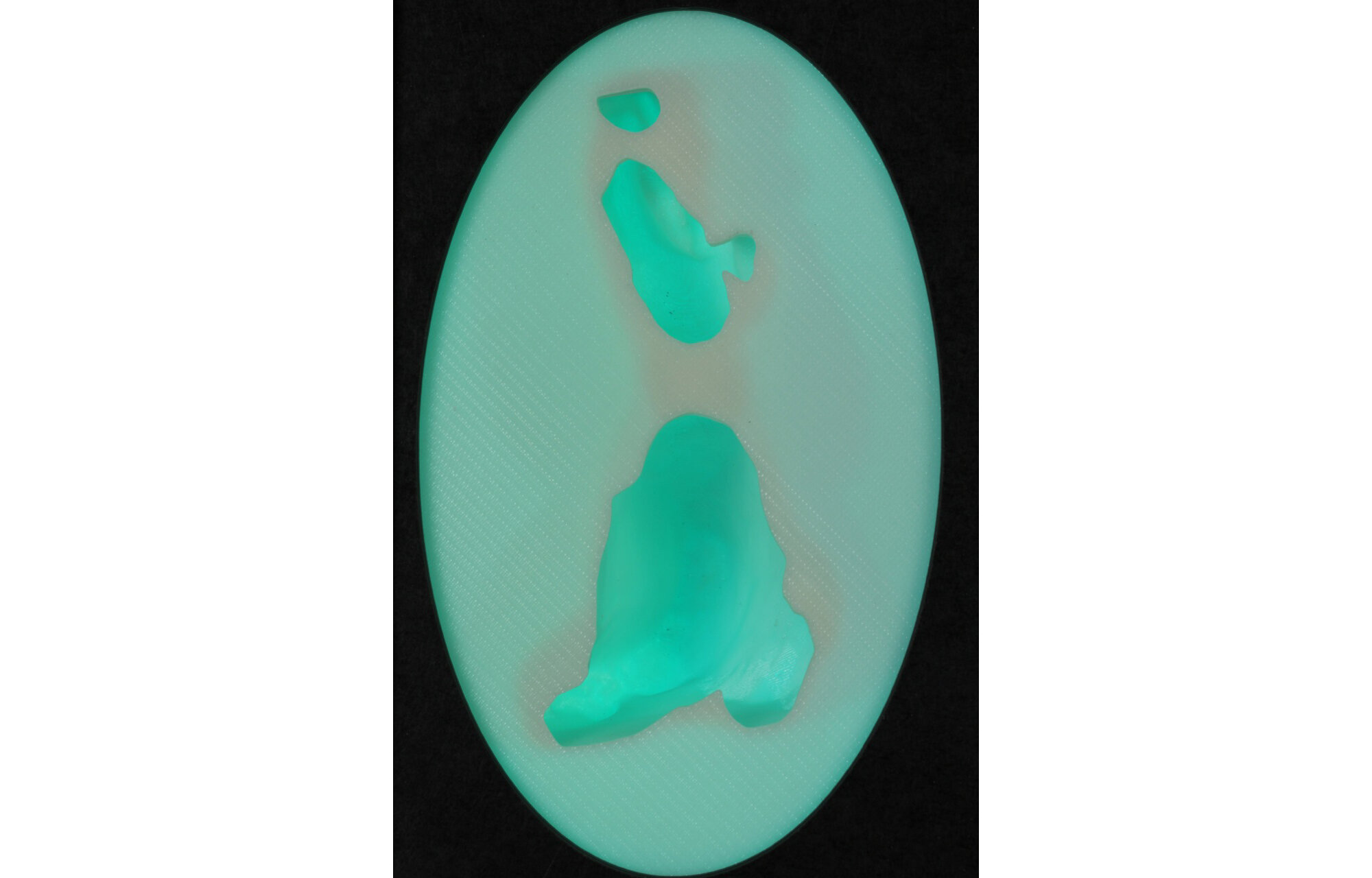
Mixed media (various woods, ABS plastic, lighting and sound component). H 36” x 36” x 6”.
John Bartram’s garden and collecting expeditions provided the first systematic exports of the botanical wonders of North America to England and then on to Europe. This happened in the midst of the European Enlightenment and the materials that Bartram supplied helped establish the foundations of the modern scientific fields of taxonomy and plant hybridization. The transport of these specimens in ‘Bartram’s Boxes’ was a technical (and often logistical and political) accomplishment in its own right. The seeds, seedlings and plants that travelled on the long and dangerous voyage across the Atlantic ended their journey in the hands and glasshouses of some of the most advanced plant biologists living at the time. In effect they inspired and provided the substance of a revolution in biological science that is still being played out today. Interestingly enough, this happened through a direct correspondence between two individuals on opposite sides of the ocean. Two men who both displayed extraordinary passion for the North American flora, a certain impatience and frustration with the tyranny of the distance between them, and a long-standing friendship and collegiality, which was never consummated by them meeting face to face. These two men were John Bartram, striving to both farm and explore the newly colonized East coast of America, and Peter Collinson in England, working hard to both enrich his own modest garden and to help distribute Bartram’s Boxes to the leading gardens and research facilities in England and Europe.
The seeds for Hybrid Artifact#2 (for John Bartram) originated from Bartram’s garden in Philadelphia. Donald Fortescue milled a freshly fallen Willow Oak tree on site and made 16 greenwood ‘Fortescue’s boxes’. A group of enthusiastic students from the University of the Arts, the Buck’s County Community College and the Indiana University of Pennsylvania, hand whittled small wooden sculptures from wood from tree fells in the Gardens and provided a hypothetical scientific or poetic text description of the completed pieces.
These small sculptures were then individually and carefully packed in the ‘Fortescue’s Boxes’ and shipped across the country to Matthew Hebert waiting with great anticipation in San Diego, California, all the way across the US – 2,700 miles (a tad less than the 3,550 miles covered by Bartram’s Boxes). Matthew then opened the boxes (conserving them carefully) and began work on his technical translation of Donald’s specimens. Utilizing an array of reverse engineering (3D scanners) and digital fabrication technologies (CNC machines and 3D Printers), Matthew translated the hand-hewn objects into 3D computer models, manipulated them in software, and then re-created them as physical objects. He created negatives of the whittlings and then remounted these in the original boxes; framed and lit from within they resemble Victorian cameos. The descriptions provided by the whittlers were read by the original artists and then the recordings linked to their respective cameos. When each cameo is lit, its description play in the vintage headphones included in the piece.
The 16 artifacts are arrayed to reflect notions of hybridization, mutation, and genealogy. The subtle textures created by both the hand of the whittler and the processes of digital fabrication highlight a problematic space of contemporary making. The radical changes in society resulting from the scientific revolution in John Bartram’s time are drawn into parallel with the radical changes in contemporary society arising from digital manufacturing.
Hybrid Artifact #1
2012
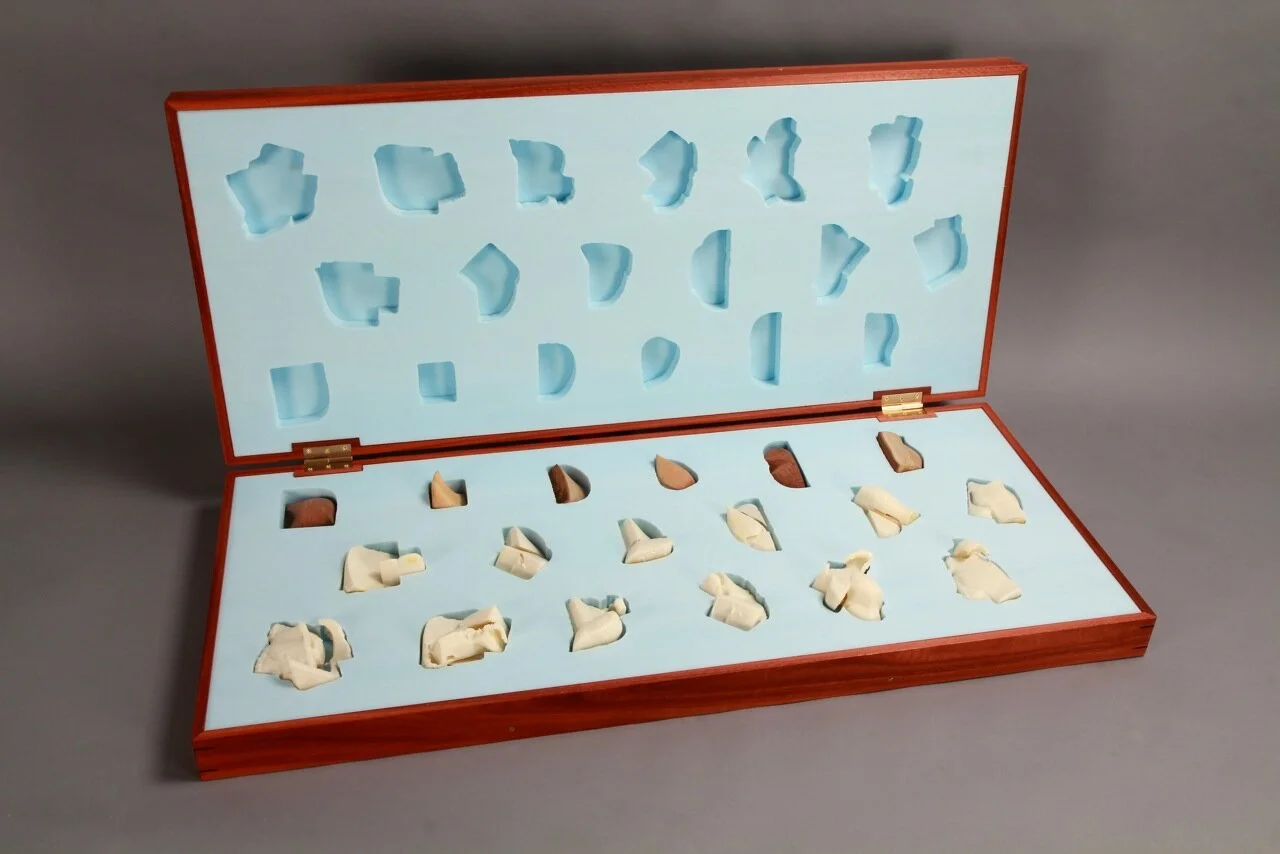
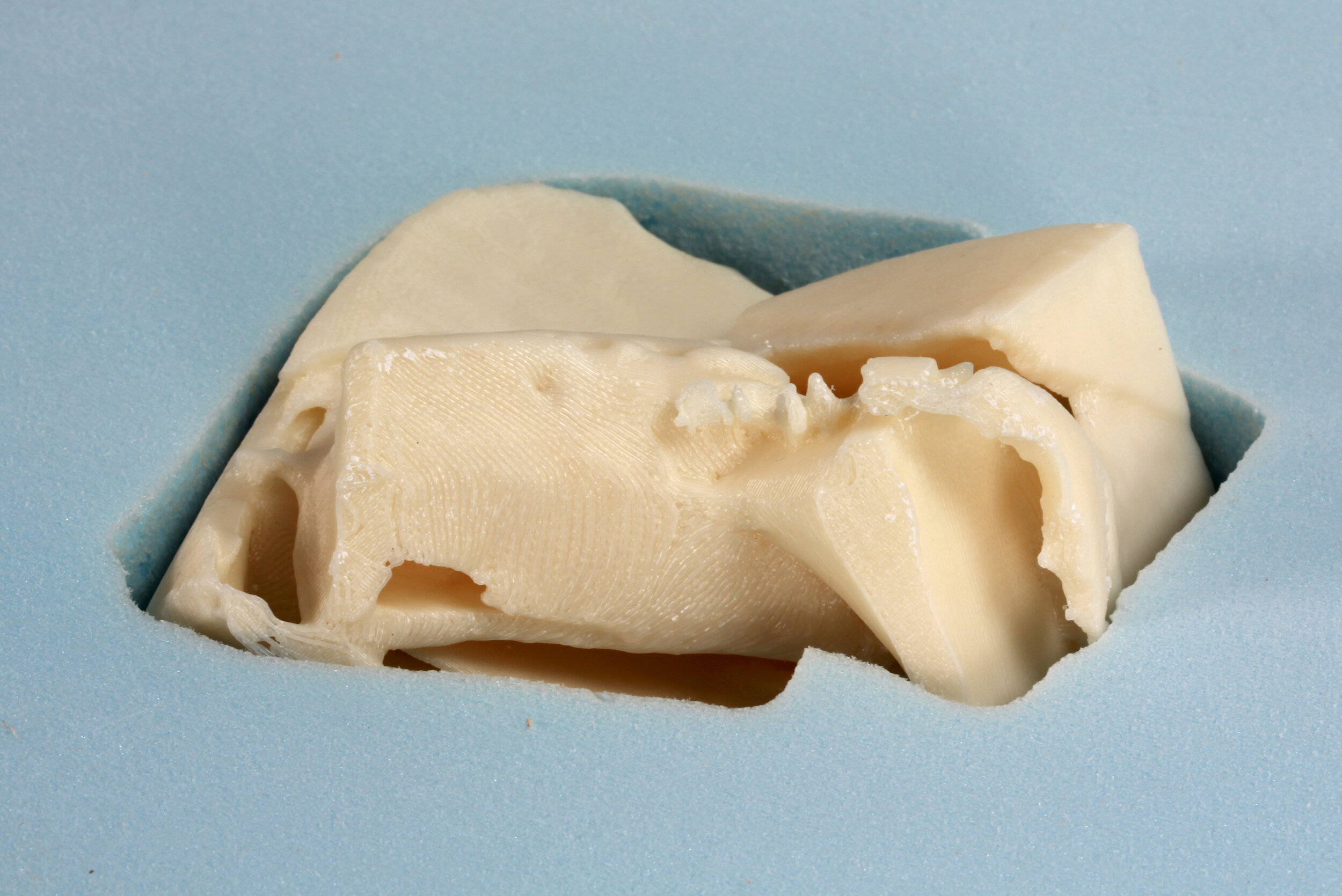

Mixed Media (various woods, ABS plastic, foam and brass hardware). H 43” x 19” x 5”.
Hybrid Artifact #1 marries the disjunct “craft” processes of hand whittling and 3D printing. By exploiting an unintended aspect of the scanning software, the printing process becomes intuitive and generative in the same way whittling is. The piece indexes taxonomy and hybridization, through the experimental nature of the process, the final forms of the objects, and their mode of display.